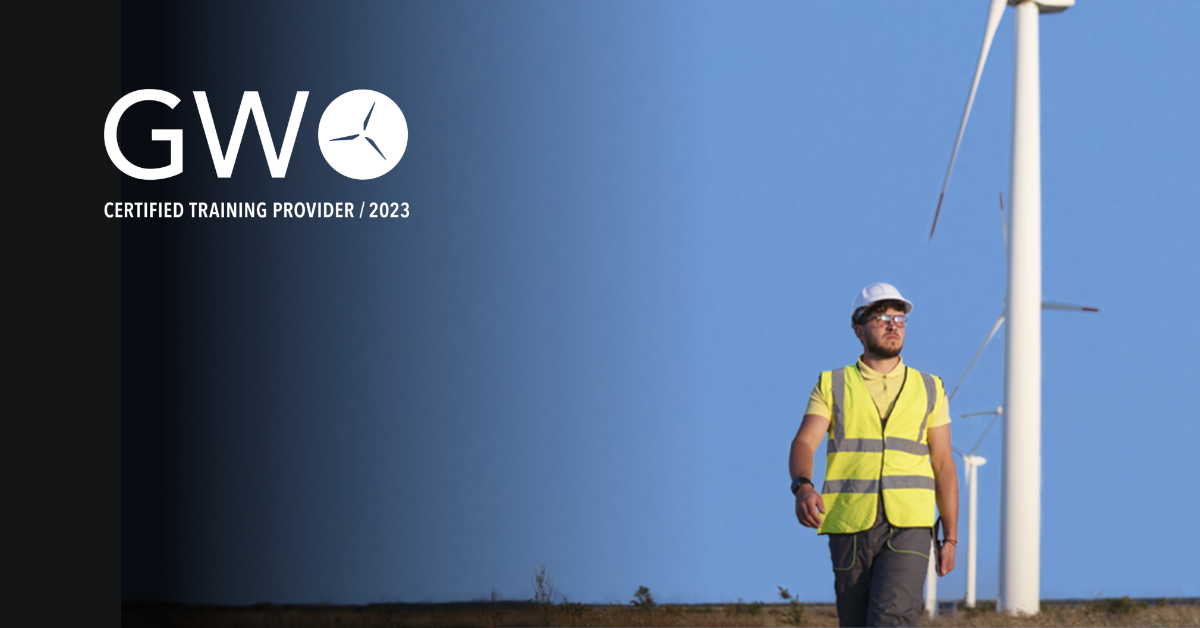A Guide to Wind Technician Training
As the world increasingly turns to renewable energy sources, wind power has emerged as a vital component of the global energy mix. Ensuring the safety and efficiency of wind energy operations is paramount, and this is where GWO training plays a crucial role. But what is GWO training? This article delves into the specifics of GWO training, its importance, and its impact on the wind energy industry, with insights from the Global Wind Organisation (GWO) and American Clean Power, among other sources.
Understanding GWO Training
GWO training refers to the standardized training programs developed by the Global Wind Organisation, an international body established by leading wind turbine manufacturers and operators. The primary goal of GWO training is to create a safer work environment in the wind energy sector by equipping technicians with the necessary skills and knowledge to handle the unique challenges of working on wind turbines.
Core Components of GWO Training
GWO training encompasses several key modules designed to address the fundamental safety and operational requirements of wind turbine technicians.
The main components include:
Basic Safety Training (BST):
– First Aid: Provides essential first aid skills tailored to wind turbine environments.
– Manual Handling: Teaches safe lifting and handling techniques to prevent musculoskeletal injuries.
– Fire Awareness: Covers fire prevention, firefighting, and safe evacuation procedures.
– Working at Heights: Focuses on the safe practices for working at heights, including the use of personal protective equipment (PPE) and fall arrest systems.
– Sea Survival (optional): Necessary for offshore wind technicians, covering survival techniques and safety measures at sea.
Basic Technical Training (BTT):
– Mechanical: Offers fundamental mechanical skills and knowledge required for wind turbine maintenance.
– Electrical: Provides basic electrical training relevant to wind turbines.
– Hydraulic: Covers the principles of hydraulic systems used in wind turbines.
Advanced Rescue Training (ART):
– Hub, Spinner, and Inside Blade Rescue: Training for rescuing personnel from confined and complex spaces within turbines.
– Nacelle, Tower, and Basement Rescue: Techniques for safe rescues from different parts of a turbine structure.
– Single Rescuer and Team Rescuer: Training in both individual and team-based rescue scenarios.
Importance of GWO Training
GWO training is crucial for several reasons:
Safety: Wind turbines are complex and often located in challenging environments. Proper training reduces the risk of accidents and injuries, ensuring a safer work environment.
Standardization: GWO training provides a standardized set of skills and knowledge, ensuring consistency and reliability across the industry.
Efficiency: Well-trained technicians are more efficient and effective in their roles, leading to improved operational performance and reduced downtime.
The Role of American Clean Power
American Clean Power (ACP), a leading advocate for clean energy in the United States, emphasizes the importance of workforce development and training in the renewable energy sector. ACP collaborates with various organizations to promote standardized training programs like those offered by GWO, ensuring that the workforce is equipped to meet the growing demands of the wind energy industry.
According to ACP, the demand for skilled wind technicians is on the rise as the U.S. continues to expand its wind energy capacity. By supporting GWO training, ACP helps ensure that the workforce is prepared to maintain and operate wind farms safely and efficiently.
Benefits of GWO Training for Wind Technicians
Career Advancement: GWO certification is widely recognized in the wind energy industry, enhancing career prospects for technicians.
Skill Development: Comprehensive training modules ensure that technicians possess a broad range of skills, from basic safety to advanced rescue techniques.
Employer Confidence: Employers can be confident that GWO-certified technicians meet high safety and performance standards, reducing risks and improving overall efficiency.
Implementing GWO Training
Many training providers, such as Safety Technology USA (STL USA), offer GWO-accredited courses. These providers often utilize mobile training units, allowing for onsite training at wind farms, which minimizes operational disruptions and provides a real-world training environment.
Testimonials and Industry Recognition
Leading wind energy companies, including Siemens Gamesa and General Electric (GE), recognize the value of GWO training. Testimonials from these companies highlight the effectiveness of the training in enhancing safety and operational performance. Technicians trained under GWO standards are better prepared to handle the complex and demanding nature of wind energy operations.
Conclusion
So, what is GWO training? It’s a comprehensive, standardized training program designed to enhance the safety and efficiency of wind technicians. Developed by the Global Wind Organisation, GWO training covers essential safety practices, technical skills, and advanced rescue techniques, ensuring that technicians are well-equipped to handle the challenges of working on wind turbines. Supported by industry bodies like American Clean Power, GWO training plays a critical role in the continued growth and success of the wind energy sector.
For more information and to explore training options, visit the Global Wind Organisation and American Clean Power websites, and consider enrolling in a GWO-accredited course to advance your career in wind energy.
Book a Course
Click the button to get in touch

